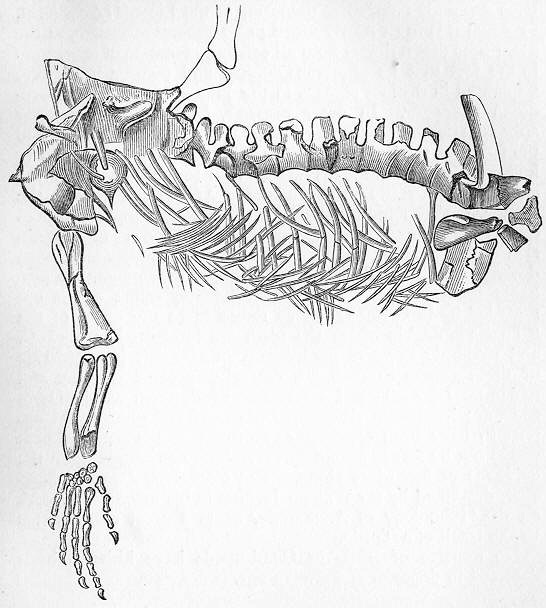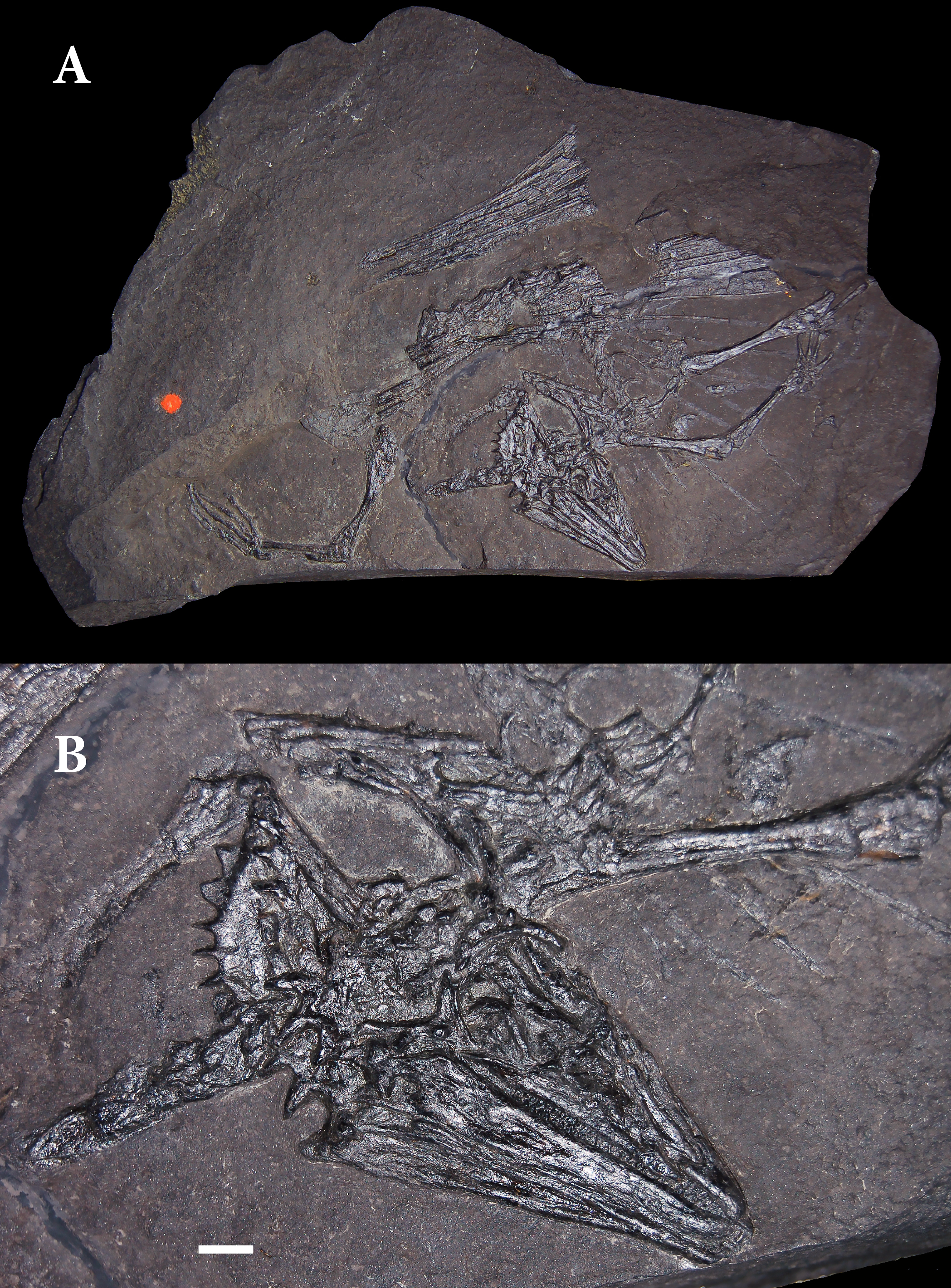|
Marl Slate
The Marl Slate Formation is a geological formation in England. Despite its name, it is mostly dolomite rock. The Marl Slate Formation was formed about 273 to 259 million years ago, during the Guadalupian and Lopingian epochs of the late Permian period of the Earth's geological history. This formation is part of the Zechstein Group of rocks, and is equivalent to the Kupferschiefer of Germany. The Marl Slate Formation contains fossils including the conodont '' Mesogondolella britannica'' and the dorypterid fishes ''Dorypterus'' and ''Lekanichthys'', as well as the gliding reptile ''Weigeltisaurus'' and terrestrial reptile ''Protorosaurus'' The Marl Slate Formation outcrops in County Durham and Yorkshire in north-east England. See also * Geology of Yorkshire * List of fossiliferous stratigraphic units in England See also *Lists of fossiliferous stratigraphic units in Europe * Lists of fossiliferous stratigraphic units in the United Kingdom References * {{DEFAULTSORT: ... [...More Info...] [...Related Items...] OR: [Wikipedia] [Google] [Baidu] |
Formation (stratigraphy)
A geological formation, or simply formation, is a body of rock having a consistent set of physical characteristics (lithology) that distinguishes it from adjacent bodies of rock, and which occupies a particular position in the layers of rock exposed in a geographical region (the stratigraphic column). It is the fundamental unit of lithostratigraphy, the study of strata or rock layers. A formation must be large enough that it can be mapped at the surface or traced in the subsurface. Formations are otherwise not defined by the thickness (geology), thickness of their rock strata, which can vary widely. They are usually, but not universally, tabular in form. They may consist of a single lithology (rock type), or of alternating beds of two or more lithologies, or even a heterogeneous mixture of lithologies, so long as this distinguishes them from adjacent bodies of rock. The concept of a geologic formation goes back to the beginnings of modern scientific geology. The term was used by ... [...More Info...] [...Related Items...] OR: [Wikipedia] [Google] [Baidu] |
Kupferschiefer
The Kupferschiefer (German for Copper Shale, also called Copper Slate) or Kupfermergel (Copper Marl), (T1 or Z1) is an extensive and remarkable sedimentary unit in Central Europe. The relatively monotonous succession is typically and maximum thick, but extends over an area of across the Southern Permian Basin. The Kupferschiefer can be found in outcrop or in the subsurface straddling six countries, including parts of the southern North Sea. The lateral equivalent outcropping in England is called Marl Slate. Despite its distinctive nature, the Kupferschiefer is not ranked as a formation but is officially declared a sub-unit of the Werra Formation, the lowest formation of the Zechstein Group, overlying the Rotliegend Group. The unit has been dated to 257.3 ± 1.6 Ma, placing it in the Wuchiapingian stage of the Late Permian. The Kupferschiefer comprises black shales, bituminous marls, mudstones and limestones deposited mostly in an open marine setting, with the borders of its ... [...More Info...] [...Related Items...] OR: [Wikipedia] [Google] [Baidu] |
List Of Fossiliferous Stratigraphic Units In England
See also *Lists of fossiliferous stratigraphic units in Europe * Lists of fossiliferous stratigraphic units in the United Kingdom References * {{DEFAULTSORT:Fossiliferous stratigraphic units in England England England is a country that is part of the United Kingdom. It shares land borders with Wales to its west and Scotland to its north. The Irish Sea lies northwest and the Celtic Sea to the southwest. It is separated from continental Europe b ... United Kingdom geology-related lists England geography-related lists ... [...More Info...] [...Related Items...] OR: [Wikipedia] [Google] [Baidu] |
Geology Of Yorkshire
The Geology of Yorkshire in northern England shows a very close relationship between the major topographical areas and the geological period in which their rocks were formed. The rocks of the Pennine chain of hills in the west are of Carboniferous origin whilst those of the central vale are Permo-Triassic. The North York Moors in the north-east of the county are Jurassic in age while the Yorkshire Wolds to the south east are Cretaceous chalk uplands. The plain of Holderness and the Humberhead levels both owe their present form to the Quaternary ice ages. The strata become gradually younger from west to east. Much of Yorkshire presents heavily glaciated scenery as few places escaped the direct or indirect impact of the great ice sheets as they first advanced and then retreated during the last ice age. The evolution of the landscape Pre-Carboniferous The oldest rocks in Yorkshire are represented by a number of small inliers of Palaeozoic areas along the southern margin of the ... [...More Info...] [...Related Items...] OR: [Wikipedia] [Google] [Baidu] |
Yorkshire
Yorkshire ( ; abbreviated Yorks), formally known as the County of York, is a Historic counties of England, historic county in northern England and by far the largest in the United Kingdom. Because of its large area in comparison with other English counties, functions have been undertaken over time by its subdivisions, which have also been subject to History of local government in Yorkshire, periodic reform. Throughout these changes, Yorkshire has continued to be recognised as a geographic territory and cultural region. The name is familiar and well understood across the United Kingdom and is in common use in the media and the Yorkshire Regiment, military, and also features in the titles of current areas of civil administration such as North Yorkshire, South Yorkshire, West Yorkshire and the East Riding of Yorkshire. Within the borders of the historic county of Yorkshire are large stretches of countryside, including the Yorkshire Dales, North York Moors and Peak District nationa ... [...More Info...] [...Related Items...] OR: [Wikipedia] [Google] [Baidu] |
County Durham
County Durham ( ), officially simply Durham,UK General Acts 1997 c. 23Lieutenancies Act 1997 Schedule 1(3). From legislation.gov.uk, retrieved 6 April 2022. is a ceremonial county in North East England.North East Assembly �About North East England. Retrieved 30 November 2007. The ceremonial county spawned from the historic County Palatine of Durham in 1853. In 1996, the county gained part of the abolished ceremonial county of Cleveland.Lieutenancies Act 1997 . Retrieved 27 October 2014. The county town is the of |
Outcrop
An outcrop or rocky outcrop is a visible exposure of bedrock or ancient superficial deposits on the surface of the Earth. Features Outcrops do not cover the majority of the Earth's land surface because in most places the bedrock or superficial deposits are covered by soil and vegetation and cannot be seen or examined closely. However, in places where the overlying cover is removed through erosion or tectonic uplift, the rock may be exposed, or ''crop out''. Such exposure will happen most frequently in areas where erosion is rapid and exceeds the weathering rate such as on steep hillsides, mountain ridges and tops, river banks, and tectonically active areas. In Finland, glacial erosion during the last glacial maximum (ca. 11000 BC), followed by scouring by sea waves, followed by isostatic uplift has produced many smooth coastal and littoral outcrops. Bedrock and superficial deposits may also be exposed at the Earth's surface due to human excavations such as quarrying and build ... [...More Info...] [...Related Items...] OR: [Wikipedia] [Google] [Baidu] |
Protorosaurus
''Protorosaurus'' ("first lizard") is a genus of lizard-like early reptiles. Members of the genus lived during the late Permian period in what is now Germany and Great Britain. Once believed to have been an ancestor to lizards, ''Protorosaurus'' is now known to be one of the oldest and most primitive members of Archosauromorpha, the group that would eventually lead to archosaurs such as crocodilians and dinosaurs. Description ''Protorosaurus'' grew up to in length, and was a slender, lizard-like animal, vaguely resembling a monitor lizard, with long legs and a long neck. Discovery ''Protorosaurus'' was one of the first fossil reptiles to be described, being initially described in Latin in 1710 by from a specimen found in Thuringia in Germany, who considered the animal to be a crocodile, and most similar to the Nile crocodile (''C. niloticus''). Over a century later, in publications in 1830 and 1832 Hermann von Meyer recognised ''Protorosaurus'' as distinct extinct reptile a ... [...More Info...] [...Related Items...] OR: [Wikipedia] [Google] [Baidu] |
Weigeltisaurus
''Weigeltisaurus'' is an extinct genus of weigeltisaurid reptile from the Late Permian Kupferschiefer of Germany and Marl Slate of England. It has a single species, originally named as ''Palaechamaeleo jaekeli'' in 1930 and later assigned the name ''Weigeltisaurus jaekeli'' in 1939, when it was revealed that ''Palaeochamaeleo'' was a preoccupied name. A 1987 review by Evans and Haubold later lumped ''Weigeltisaurus jaekeli'' under ''Coelurosauravus'' as a second species of that genus. A 2015 reassessment of skull morphology study substantiated the validity of ''Weigeltisaurus'' and subsequent authors have used this genus. Like other Weigeltisaurids, they possessed long rod-like bones that radiated from the trunk that were likely used to support membranes used for gliding, similar to extant ''Draco'' lizards. History of discovery The first remains of ''Weigeltisaurus jaekeli'' were described by Johannes Weigelt in 1930 from a specimen (SSWG 113/7) found in the Kupferschiefer ... [...More Info...] [...Related Items...] OR: [Wikipedia] [Google] [Baidu] |
Dorypterus
''Dorypterus'' is a small, extinct genus of prehistoric ray-finned bony fish. It lived during the Wuchiapingian stage of the late Permian epoch in what is now Germany (Kupferschiefer) and England (Marl Slate). It is a hypsisomatic bobasatraniiform with a high dorsal fin. Due to anatomical differences with other bobasatraniiforms, such as the presence of pelvic fins and the reduced scale cover, ''Dorypterus'' is placed in its own monotypic family, Dorypteridae. Two species are known, ''D. hoffmanni'' and ''D. althausi'', which are distinguished by differences in length of the dorsal fin. Whereas ''D. hoffmanni'' has a long dorsal fin, the dorsal fin of ''D. althausi'' is short. However, it is possible that this difference is due to sexual dimorphism, and that ''D. althausi'' represents the female phenotype of ''D. hoffmanni''. References See also * Prehistoric fish * List of prehistoric bony fish A ''list'' is any set of items in a row. List or lists may also refer to: ... [...More Info...] [...Related Items...] OR: [Wikipedia] [Google] [Baidu] |
Palaeonisciformes
The Palaeonisciformes (Palaeoniscida) are an extinct order of early ray-finned fishes ( Actinopterygii). Palaeonisciformes ''sensu lato'' first appeared in the fossil record in the Late Silurian and last appeared in the Late Cretaceous. The name is derived from the Ancient Greek words παλαιός (''palaiós'', ancient) and ὀνίσκος (''oniskos'', 'cod-fish' or woodlouse), probably pertaining to the organization of the fishes' scales, similar to the exoskeletal plating of woodlice. In an early interpretation of the group, the Palaeonisciformes are divided in two suborders: Palaeoniscoidei (includes '' Palaeoniscum'' and fossil taxa with a broadly similar appearance) and Platysomoidei (includes '' Platysomus'' and other deep-bodied early actinopterygians). These groupings are considered paraphyletic today. In the cladistic sense, Palaeonisciformes '' sensu stricto'' should only refer to the Permian ''Palaeoniscum'', the name giving taxon, and all other taxa that fall ... [...More Info...] [...Related Items...] OR: [Wikipedia] [Google] [Baidu] |
Mesogondolella
''Mesogondolella'' is an extinct genus of conodonts. The species ''M. daheshenensis'' and ''M. subgracilis'' are from the Permian (probably Wordian) of the Daheshen Formation in China.The age of the Daheshen Formation in Jilin Province based on conodonts. Xiao-dong Zhou, Dong-jin Li, Guang-qi Wang, Xi-qing Sun and Cheng-yuan Wang, Acta Palaeontologica Sinica, 2013, volume 52, issue 3, pages 294–308 The top of the Sakmarian stage (the base of the Artinskian) is defined as the place in the stratigraphic record where fossils of conodont species ''Sweetognathus whitei'' and ''Mesogondolella bisselli'' first appear. References External links * Ozarkodinida genera Permian conodonts {{Conodont-stub ... [...More Info...] [...Related Items...] OR: [Wikipedia] [Google] [Baidu] |






